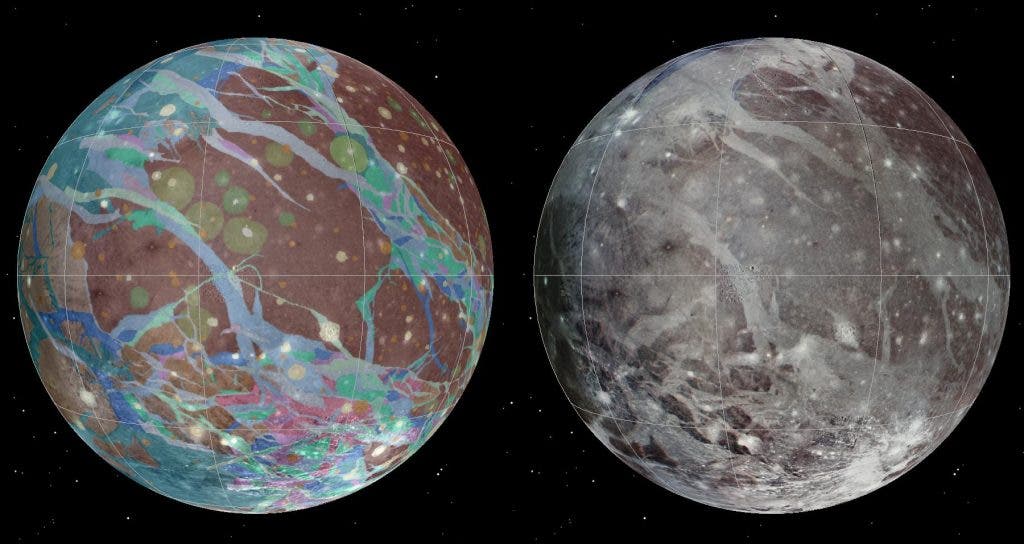NASA’s Juno spacecraft will fly at only 1,038 kilometers (645 miles) from the surface of Jupiter’s largest moon, Ganymede, tomorrow, June 7. It will be the closest-known flyby since the Galileo spacecraft made its penultimate close approach more than a decade ago and it’s expected to yield valuable insights into Jupiter’s moon.

Juno’s science instruments will start gathering data about three hours before the spacecraft’s closest approach. The measurements will provide valuable information into the Moon’s composition, ionosphere, magnetosphere, and ice shell. They will also benefit future missions to the Jovian system, which includes Jupiter, its rings and moons.
“Juno carries a suite of sensitive instruments capable of seeing Ganymede in ways never before possible,” Scott Bolton, Juno’s main investigator, said in a statement. “By flying so close, we will bring the exploration of Ganymede into the 21st century, both complementing future missions with our unique sensors and helping prepare for the next generation of missions to the Jovian system.”
Juno’s flyby is powered by solar energy and will send the information and images about this moon to Earth. Due to the speed of the flyby, the moon will go from being a point of light to a viewable disk, then back to a point of light in about 25 minutes. Ganymede is larger than the planet Mercury and it’s the only moon in the solar system with its own magnetosphere.
With an ultraviolet spectrograph, a microwave radiometer, and an infrared mapper, Juno will peer into Ganymede’s water-ice crust, gathering data on its composition and temperature. Bolton said the MWR will provide information of how the composition of how the composition and structure of the moon’s ice shell varies with depth.
NASA will also use the signals from Juno’s wavelengths to perform a radio occultation experiment to probe the moon’s tenuous ionosphere – the outer layer of an atmosphere where gases are excited by solar radiation to form ions. This will help to understand the connection between the moon’s ionosphere, its magnetic field, and Jupiter’s magnetosphere.
At the same time, Juno’s navigation camera, originally tasked to help the orbiter on course, will be in charge of collecting information on the high-energy radiation environment in the region near Ganymede. Heidi Becker, Juno’s radiation monitoring lead, explained that a special set of images will be collected as part of that experiment.
Exploring Jupiter
Juno’s main goal is to understand the origin and evolution of Jupiter. Underneath its dense cloud cover, Jupiter safeguards secrets to the fundamental processes and conditions that governed our solar system during its formation. As the main example of a giant planet, Jupiter can also provide critical knowledge for understanding the planetary systems being discovered around other stars.
The mission is the second spacecraft designed under NASA’s New Frontiers Program. The first was the Pluto New Horizons mission, which flew by the dwarf planet in July 2015 after a nine-and-a-half-year flight. Juno will investigate the existence of a solid planetary core, map Jupiter’s magnetic field, measure the amount of water in the atmosphere and observe the planet’s auroras.
Just like the sun, Jupiter is mostly hydrogen and helium, so it must have formed early, capturing most of the material left after our star came to be. But it’s so far unclear how this happened. Jupiter’s giant mass allowed it to hold onto its original composition, providing with a way of tracing our solar system’s history.






